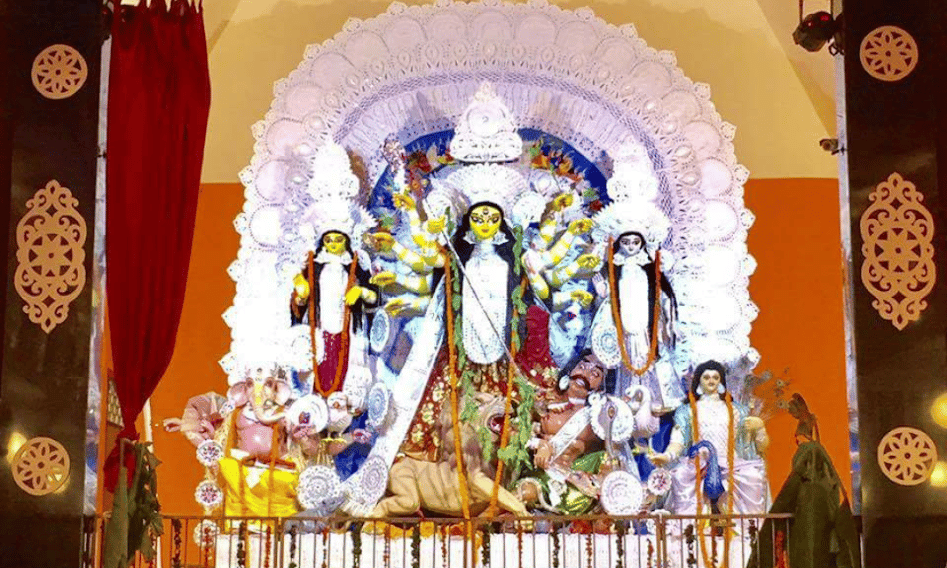Durga Puja is not just a celebration of festivities, it is about celebrating LIFE. To most non-Bengali’s ‘Durga Puja’ signifies five days of fun and enjoyment. But to majority of Bengali’s, these five days are special, when Maa (Durga) comes home to her maternal home with her children, Laxmi, Sarasvati, Ganesh and Kartik. Every year Bengali’s look forward to celebrating Pujo.
Being born and brought up in the Bengali para (in Bengali means a neighbourhood or locality, usually characterised by a strong sense of community)of Delhi, Chittaranjan Park. Here the festival is not just about a few days of worship but is much more beyond that. It is about celebrations, functions, various creative competitions, fair-exhibitions, friends and families, endless adda(conversations and chilling) and reaffirmation of a happy self.
After getting married, myinvolvement in Pujo has become more about being part of a bigger community. My husband and in-laws are members of such a community in our Kali Bari (mandir), where every member young or old,gets involved in the festivities completely. Mornings usually comprise of Pushpanjali (offering of flowers to Durga), helping the priest with the puja, arranging drawing competitions for the kids, distributing Bhog(the blessed food that doubles up as a complete meal as opposed to prasad) to the thousands of people who visit our pandal and finally getting to eat after some 4-5 hours.
The evenings are more hectic and fun with friends and family visiting, constantly running in and out of the pandal getting food for the elder aunties and uncles who sit and gossip and watch the cultural performances. Each day in the pandal is spent with a lot of happiness, and for the most part, all of us tend to forget what is happing in the world outside our little Pujo.

This year though, with things the way they are, even Pujo had to be adjusted to the ‘new normal’ to keep elderly and young alike, safe and healthy. In Delhi, most puja committees have decided not to celebrate in the larger-than-life manner as they usually do. Many committees and associations are having a small “Ghat Puja”. Keeping elderly safe during these times is the priority for most committees who usually tend to comprise of elders. Large gatherings are not being permitted, have been reduced to committee members and families taking turns to visit the pandal. Non-committee people can visit, pay their respects, pray and leave.
Even though, this year’spujo might not be exactly how the years that preceded it, one thing is true, each Bengali will be equally as sad as it is at the end on Vijayadashami. On Dashami, in the mornings after the first Pushpanjali, all the married women gather in their finest re-white saree’s and play what is known as “ShindoorKhela” (literally meaning ‘vermillion game’, is a Bengali Hindu tradition where women smear each other with sindur). On the day of the Vijayadashami after the conclusion of the ritual worship, married Bengali Hindu women apply sindur on the forehead and feet of the goddess and offer sweets to her. Then they put sindur on each other’s faces and offer sweets to each other. The evening of Vijayadashami is when everyone gathers to bid farewell to Maa, and send her off back to her in-laws. This is signified with the ‘visarjan’ of Maa’s idol.
Written By: Ishanti Ghose
Senior Executive – HelpAge India







